Recent sampling in a UK city’s housing schemes found traces of legionella in 13 out of 22 properties.
Brighton and Hove City Council revealed the results stating they had contracted a company to carry-out weekly sampling across its senior living properties.
Meanwhile, at SAS Water we have recently seen an uptick of property managers from children’s care settings contacting us with questions after being asked to see evidence of legionella control by Ofsted inspectors.
Managing Director Lizzie Ward said: “When we get phone calls from care homes there’s often some confusion. People ask for a legionella safety certificate, and we have to explain that these don’t exist and what they need to do is to carry-out a risk assessment.
“Legionella occurs naturally in water courses and a positive sample in workplace water does not automatically spell danger.
“What it does mean is that action is required within a water system. The bacteria can cause Legionnaires’ Disease, a potentially fatal form of pneumonia.”
In a news release, Brighton and Hove Council said:
“As part of our ongoing commitment to safeguarding the health and wellbeing of residents, we have introduced regular sample testing of water from taps and showers in communal areas in seniors housing schemes.
“The introduction of regular sampling is to monitor the quality of the water supply and, if necessary, take preventative measures to reduce the risk of legionella.
“A positive trace does not always mean there is a health risk, and we have had no reported cases of infection. However, we treat this seriously and have taken immediate action to treat the issue.
“We have taken the affected outlets out of use and are following the recommended steps to clear traces of legionella bacteria from all the outlets.”
Lizzie added: “Under CoSSH, the Health and Safety at Work Act Control of Substances Hazardous to Health, workplaces have a legal obligation to mitigate the risk of legionella. This requires a risk assessment and regular control measures.
“In the care sector this requirement is assessed during inspections by the Care Quality Commission, and recent enquiries to my team show that children’s homes, looking to register with Ofsted, the school standards agency, are also being asked for evidence of a legionella risk assessment having been carried-out.
“The fact that awareness of the need for a risk assessment is rising can only be a positive in terms of public health.”
“Looking at the Brighton Council website it is pleasing to see they are working to raise awareness. It gives actions residents can take to reduce risk, such as regularly descaling shower heads, removing and disinfecting a shower head, and running the shower, flushing out bacteria, when returning home from a holiday.
“Legionnaires’ Disease is caused by breathing in contaminated water vapor. It cannot be contracted from patient to patient.”
Any workplace with five or more members of staff or any visitors must have measures in place. Alongside the risk assessment, they must be able to demonstrate that they have received competent advice and that they have given information, instruction, and training to their employees.
SAS Water can take the stress out of legionella control responsibilities, providing either a holistic control service or working on one-off projects.
The company, based in Leek, Staffordshire has a team of 14 professionals, made up of legionella consultants, and commercial plumbers.
ENDS
Notes to Editors
Additional source, see www.brighton-hove.gov.uk/news/2024/review-finds-traces-legionella-bacteria-seniors-housing-schemes

